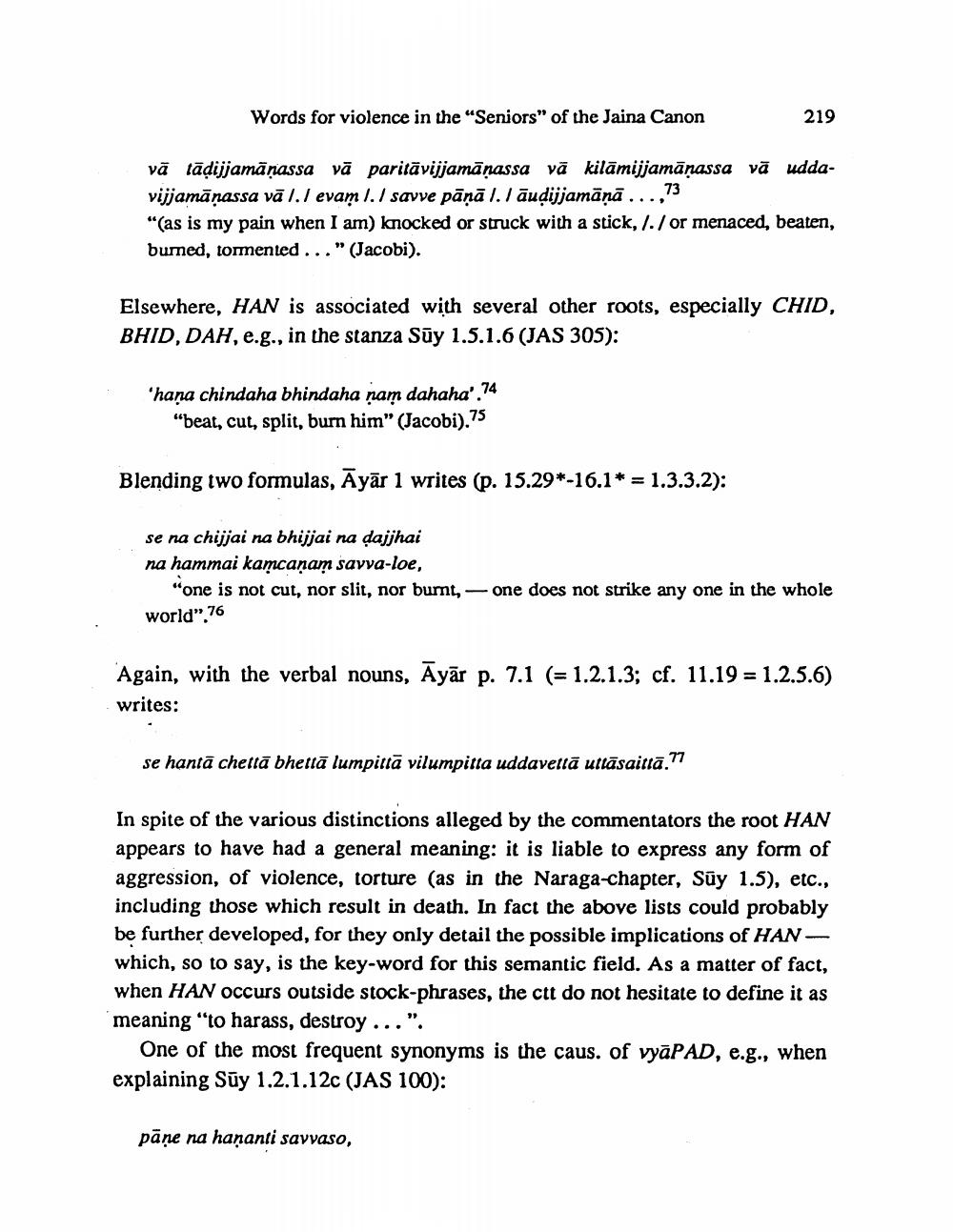________________
Words for violence in the “Seniors" of the Jaina Canon
219
vā tādijjamāṇassavā paritāvijjamānassa vā kilāmijjamānassa vā uddavijjamāṇassa vā l.I evam I. I savve pāņā 1.1āudijjamāņā ...," "as is my pain when I am) knocked or struck with a stick, I. / or menaced, beaten, burned, tormented ..." (Jacobi).
Elsewhere, HAN is associated with several other roots, especially CHID, BHID, DAH, e.g., in the stanza Sūy 1.5.1.6 (JAS 305):
"hana chindana bhindana nam dahaha'.74
"beat, cut, split, burn him" (Jacobi).75
Blending two formulas, Āyār 1 writes (p. 15.29*-16.1* = 1.3.3.2):
se na chijjai na bhijjai na dajjhai na hammai kamcaņam savva-loe,
"one is not cut, nor slit, nor burnt, world". 76
one does not strike any one in the whole
Again, with the verbal nouns, Āyār p. 7.1 (= 1.2.1.3; cf. 11.19 = 1.2.5.6) writes:
se hantā chetlā bhettă lumpittā vilumpitta uddavetlā uttāsaittā."
In spite of the various distinctions alleged by the commentators the root HAN appears to have had a general meaning: it is liable to express any form of aggression, of violence, torture (as in the Naraga-chapter, Sūy 1.5), etc., including those which result in death. In fact the above lists could probably be further developed, for they only detail the possible implications of HAN - which, so to say, is the key-word for this semantic field. As a matter of fact, when HAN occurs outside stock-phrases, the ctt do not hesitate to define it as meaning “to harass, destroy ...".
One of the most frequent synonyms is the caus. of vyāPAD, e.g., when explaining Sūy 1.2.1.12c (JAS 100):
pāņe na haņanti savvaso,




